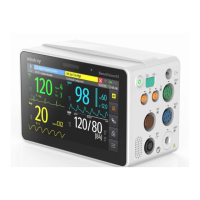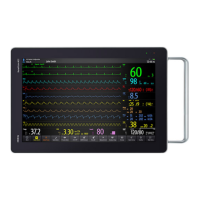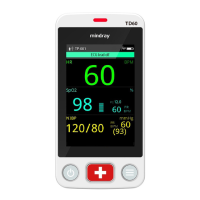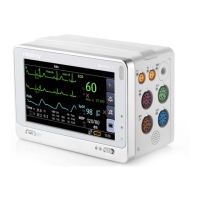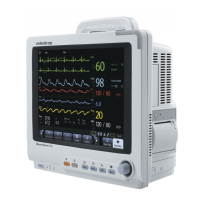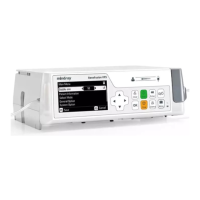BeneVision N Series Patient Monitor Operator’s Manual 27 - 3
27.5 Accessing the On-screen EEG Guide
The monitor provides the on-screen EEG guide to help you understand EEG monitoring functions and operating
procedure.
To access the on-screen EEG guide, follow this procedure:
1. Select the EEG numerics area or waveform area to enter the EEG menu.
2. Select the Introduction tab.
3. Select a tab as required.
◆ Select the Summary tab to view the EEG monitoring principles, intended use, and work modes.
◆ Select the Target Patient tab to view the applicable patients for EEG monitoring.
◆ Select the Operation Guide tab to view the EEG monitoring procedure.
◆ Select the CSA and DSA tab to understand the CSA and DSA expand views.
27.6 Prepare for EEG Monitoring
To monitor EEG, follow this procedure:
1. Connect EEG module, patient cable and lead wires. For more information, see 27.6.1EEG Equipment to
Patient Connection.
2. Select Montage. You can select a predefined montage and you can also customize a montage. See
27.6.2.3Customizing an Electrode Montage.
3. Mark the electrode sites on the patient’s head according to the montage you have chosen.
4. Prepare the skin of the electrode application sites.
5. Apply the electrodes. For more information, see 27.6.3Attaching EEG Electrodes.
6. Perform sensor check and observe the results.
27.6.1 EEG Equipment to Patient Connection
The following picture illustrates the connection between the EEG module and accessories.
(4) EEG parameters
You can configure the displayed EEG parameters. A maximum of six EEG parameters can be displayed. For more
information, see
27.8.5Changing Displayed EEG Parameters.
(5) EMG indicator
◆ Empty: EMG < 30 dB. EEG monitoring conditions are optimal.
◆ 1 to 4 bars: EMG 30 to 55 dB. EEG monitoring conditions are acceptable.
◆ 5 bars: EMG > 55 dB. EEG monitoring conditions are unacceptable.
(1) EEG module (2) EEG patient cable (3) Lead wires

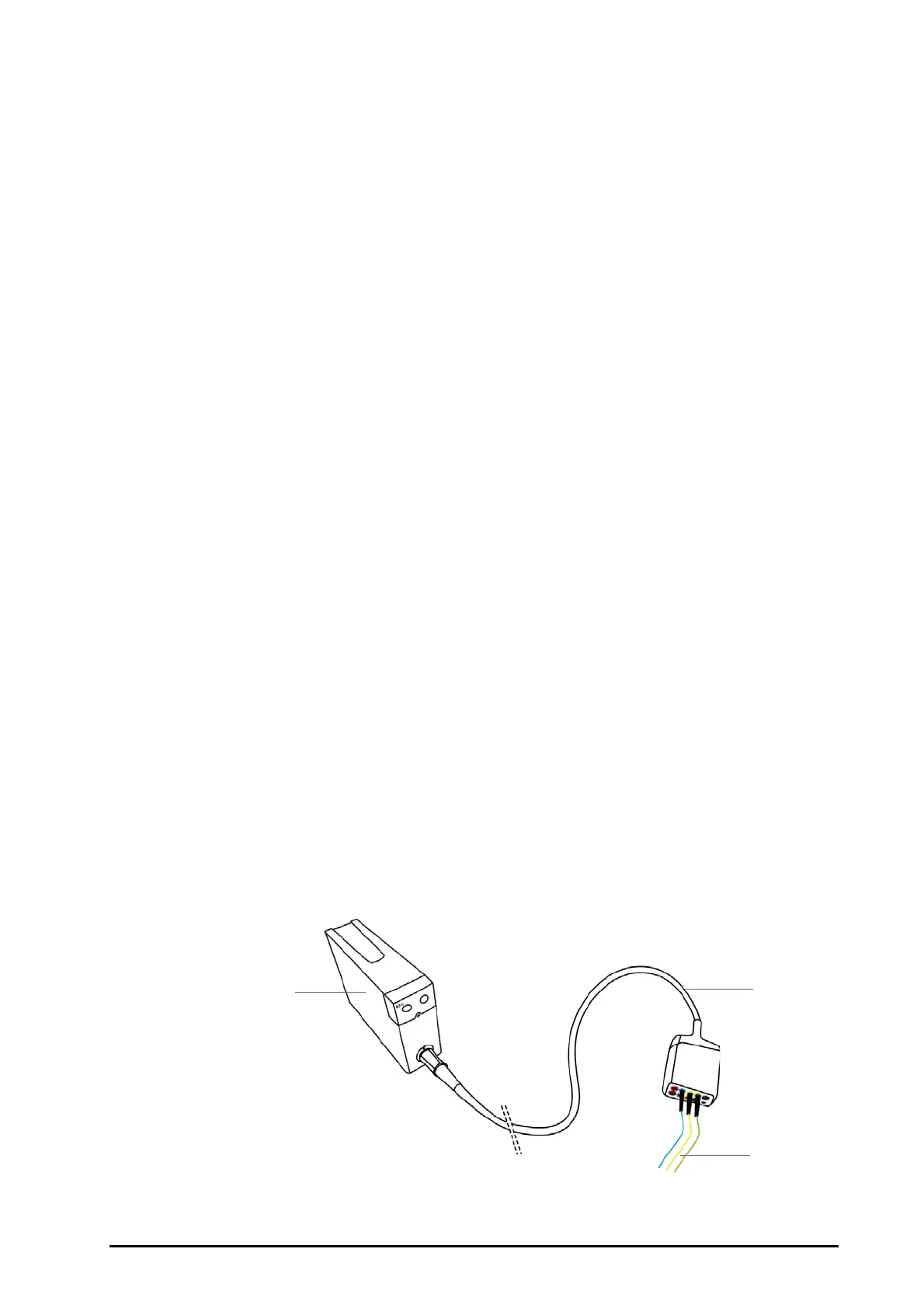